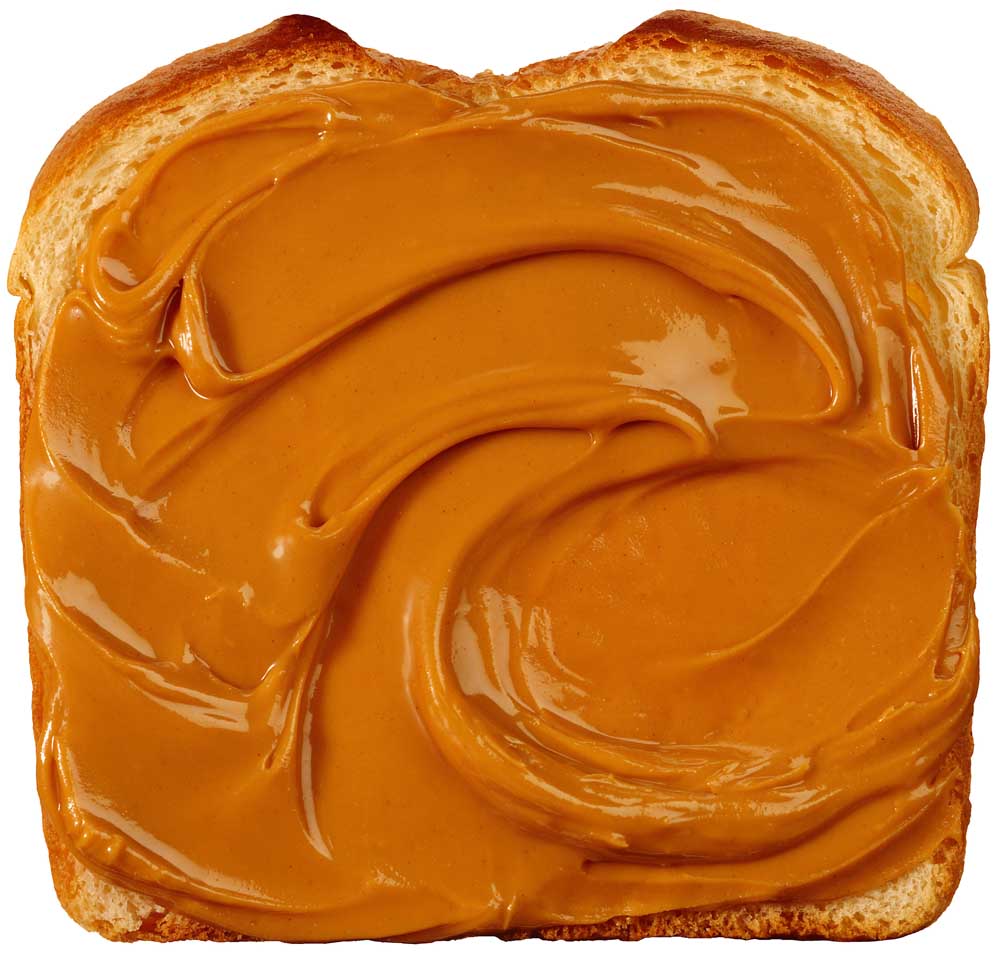Healthy eating: Be a part-time vegan
Published 12:00 am Monday, May 11, 2015

- Peanut butter on bread
Veganism is hot.
Maybe you’ve considered trying it out for weight loss or better overall health, environmental or ethical reasons.
Being a part-time vegan was popularized by The New York Times food writer Mark Bittman, who came up with the concept of eating “vegan before 6 p.m.” (VB6) when his doctor warned him that, at age 57, he was in trouble and should consider becoming a vegan.
“I had developed the pre-diabetic, pre-heart-disease symptoms typical of a middle-aged man who’d spent his life eating without discipline,” Bittman writes in his “VB6” diet book (Clarkson Potter/Publishers, 2013).
He was 40 pounds overweight and had aching knees as a consequence. His cholesterol, which had always been normal, had crept into the danger zone.
Instead of going on a cholesterol-reducing drug, swearing off pizza, bacon and burgers for a while, and eating endless salad, Bittman switched his diet to vegan before 6 p.m., eating mostly fruits, vegetables, whole grains, beans and nuts during the day. In four months of refraining from animal products or hyperprocessed foods (white bread, white rice, white pasta, junk food, sugar and alcohol) until dinnertime, when he would eat whatever he liked — from meat to ice cream — Bittman lost more than 35 pounds and saw his blood numbers improve.
He has kept the weight off, and the VB6 going, for eight years now. He says it’s his way of eating for the rest of his life, because it’s both healthful and delicious.
“It’s about doing your best to nourish yourself with real, wholesome foods most of the time and not beating yourself up when you don’t,” Bittman writes in “VB6.”
Have no fear
If you’re concerned that a vegan or vegetarian diet will be hard to maintain because you’re not sure how to get enough protein and other nutrients, have no fear.
“People eat way more protein than they need. But if you’re vegetarian or vegan and eating a variety of foods, including beans and whole grains and vegetables, and you maintain your weight, you’re going to get enough protein,” said registered dietitian Reed Mangels. She’s the nutrition adviser for the Vegetarian Resource Group, a nonprofit dedicated to educating the public on vegetarianism and veganism. “A quarter cup of cooked beans is equivalent to an ounce of meat in protein, so a quarter-pound burger is 4 ounces, and that equals a cup of beans. A typical bean burrito would include a half cup of beans for one person,” Mangels said.
She said that’s her favorite go-to fast vegan dinner at home.
“I like to heat up a whole-wheat tortilla, open a can of beans, and get anything in the fridge — lettuce, tomato, mushrooms, spinach, shredded cabbage, leftover cooked potatoes, corn — and just wrap it all up,” she said.
A peanut butter and jelly sandwich on whole-grain bread is a simple, protein-filled vegan choice, too.
Mangels, who has been a vegan for 25 years, is also a professor of nutrition at the University of Massachusetts-Amherst. She talked us through some vegan sources of nutrients to replace those that omnivores get by eating meat and dairy (see “how to”), and said that the only real area of concern is getting enough vitamin B-12.
“Someone who is vegan needs a reliable source of vitamin B-12, because it’s only found in animal products. So if you’re eating some meat, you’re getting enough, but if you’re cutting meat out of your diet, you need to eat a food that has it added to it, like meat substitutes or vegan milks that are fortified with B-12,” Mangels said.
The recommended daily intake for vitamin B-12 for an adult is 2.4 micrograms, Mangel said — most multivitamins have more than that.
“But I don’t think you need a multivitamin if you’re pretty committed to eating whole, healthy, good food. But if you’re in a special situation because food choices are limited, or you’re concerned, go see a registered dietitian to assess your diet as to whether you need supplements,” she said. •
HOW TO GET YOUR NUTRIENTS
VITAMIN B-12
Good vegan sources of vitamin B-12 are plant-based meat substitutes such as tofu and seitan, or nut milks (soy, almond, cashew, etc.) that are fortified with B-12.
PROTEIN
Good vegan sources include beans (black, pinto, cranberry, soy, kidney, garbanzo, cannellini, navy, great northern, lima, fava and mung) and legumes such as lentils.
Plant-based meat substitutes are readily available now, including tofu, tempeh, seitan and textured vegetable protein (TVP). Commercially produced faux meats such as vegetable burgers and Tofurky are convenient to buy and microwave, but dietitian Reed Mangels warns they can be “expensive, full of sodium and sort of processed. You can live your whole life as a vegan and never eat fake meats, or you can eat them once a day or once a week if you like,” she said.
Do some research: You’ll find that protein is in most foods, except alcohol, sugar and fats. “If part of a day’s menu included the following foods, you would meet the recommended daily allowance (RDA) for protein for an adult male: 1 cup oatmeal, 1 cup soy milk, 2 slices whole wheat bread, 1 bagel, 2 tablespoons of peanut butter, 1 cup vegetarian baked beans, 5 ounces tofu, 2 tablespoons almonds, 1 cup broccoli, and 1 cup brown rice,” according to its Vegetarian Resource Group in their “Vegan Diets in a Nutshell” poster that can be downloaded at www.vrg.org.
CALCIUM
Good vegan sources of calcium are dark green, leafy vegetables such as kale, collard greens, bok choy and mustard greens, tofu made with calcium sulfate, and calcium-fortified soy milk and orange juice. Contrary to popular belief, spinach is not a good source of calcium.
IRON
Good sources include dried beans and dark green leafy vegetables, whole grains, tempeh, tahini, raisins, watermelon, and millet. “Iron absorption is increased markedly by eating foods containing vitamin C along with foods containing iron,” notes the Vegetarian Resource Group.
VITAMIN D
Good sources are vegan milks (soy, almond, oat, cashew, etc.) fortified with vitamins. Vitamin D is produced naturally by the body when skin is exposed to sunlight. “It is not natural to cow’s milk but was added when the government noticed that many children had a vitamin D deficiency,” Mangels said. Read food labels and you’ll find many vegan milks are now fortified with vitamins and minerals.
OMEGA-3 FATTY ACIDS
Good sources include flaxseed, canola oil, tofu and walnuts.
‘Who knew?’
Ann Gentry is a Los Angeles vegan chef and owner of Real Food Daily, a popular vegan restaurant in L.A. She’s also the author of “Real Food for Everyone: Vegan-Friendly Meals for Meat-Lovers, Vegetarians, and Vegans” and hopes people will try vegan eating to feel better and have more energy. “If you’re really serious about changing your health, it’s about eating at home, and eating simply. I believe that more whole grains and quality vegetables, cooked simply, will really serve you on many levels. There’s too much fat, salt and sugar in our diets, so it’s hard to taste the simplicity of carrots, broccoli and onions. Onions are sweet, who knew?”
Remember — part time: Her recipes for nicoise salad and Lasagna Rolls with Tofu Ricotta and Everyday Tomato Sauce will show you don’t need meat or dairy to have satisfying, delicious meals. “It’s not necessary to become vegan or vegetarian to enjoy the benefits of eating plant-based meals. Don’t let an all-or-nothing attitude turn you off: It’s well worth the effort to consume less meat and dairy even if you don’t eliminate it entirely,” Gentry writes in her book.






